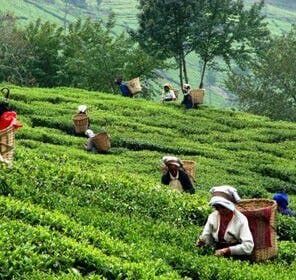
Around 4th century, Assam and its surroundings were known as Kamprup, and was ruled by Varmans, Bhaskar Varman being the most prominent king. Later they were under the rule of Mlechchha dynasty and Kamprup-Palas. All the three dynasties claimed their lineage from Narakasur. The kingdom disintegrated after the Kamrup-Palas.
Three later dynasties came up in the Medieval period, Ahoms, Sutias and the Koch. Ahoms, a Tai group originally from Yunan province in China, ruled upper Assam for nearly 600 years (1228-1826 AD). The Sutiya rulers (1187 -1673 AD) reigned on the north banks of Brahmaputra, their kingdom stretching from Vishwanath in the west to Parshuram Kund in the east in Upper Assam and in the state of Arunachal Pradesh. The Koch, of Tibeto-Burmese origin became sovereigns in 1510 AD. The Ahoms were at their zenith during the reign of Sukhrungpha or Sworgodeu Rudra Simha (c. 1696–1714 AD). The Ahom kingdom was run over by the Burmese in 1820s, who took control of the entire Brahmaputra valley.
British, in their campaign against the Burmese, annexed first lower, and then upper Assam. This led to the treaty of Yandaboo. Later, the remaining kingdoms, including Kacharis and Khasis were also brought under the British empire. In 1874, Assam was declared a separate state, with Shillong as its capital.
With the discovery of Camellia sinensis (tea plant), led to widespread tea plantations in Eastern Assam, where soil and climate were most suitable.
In 1905, Assam was amalgamated with East Bengal. In 1912 it was reconstituted into a chief commissioners’ province. In 1913, a legislative council and, in 1937, the Assam Legislative Assembly, were formed in Shillong, the erstwhile capital of the region. The British tea planters imported labour from central India adding to the demographic canvas.
After a few initial unsuccessful attempts to gain independence for Assam during the 1850s, anti-colonial Assamese joined and actively supported the Indian National Congress against the British from the early 20th century, with Gopinath Bordoloi emerging as the preeminent nationalist leader in the Assam Congress.
In 1979, Assam flared into Assam Agitation (or Assam Movement) a popular movement against illegal immigration. The movement, led AASU and AAGSP, two local parties, led an agitation to compel the government to identify and expel illegal immigrants and prevent new immigration. The agitations were largely non-violent, but there were incidents of acute violence, like the Nellie massacre. It ended in 1985 following the Assam Accord that was signed by the agitation leaders and the Government of India. The leaders of the agitation formed a political party, Asom Gana Parishad, which came to power in the state of Assam in the Assembly elections of 1985.
The kings of Kamrupa established the Brahmanas in different parts of the country. Thus Vedic culture spread in ancient Assam. To assimilate the nonAryans, the Aryans had to change their own cultural outlook. As a result Vedic culture took a new form with both Aryan and non-Aryan elements. Fetishism, animism, cult of fertility, human sacrifice, ancestor worship etc. as elsewhere in India, passed on to Hinduism, and moulded its character which became manifest in new local forms.[1] There were Saivism, Sakti worship, Tantrik Buddhism, Sun worship in the society of the ancient Assam. Such religious practices were followed in medieval Assam also. Elaborate ceremonialism began in religion. Magic, incantation and other left handed practices were common during this period. There were also many superstitions among the people of this period. In such a chaotic situation Sankardeva and his disciple Madhabdeva propagated Neo-Vaishnavite movement in Assam. The Neo-Vaishnavite movement has been brought many socio-religious changes to the society of Assam. Besides neoVaishnavism other elements of social change such as modernisation, acculturation, assimilation, globalisation etc. has been brought different change in the fields of religion and society of the ethnic communities of Assam.
Mongoloids or Kiratas became the early inhabitants of the land. Earlier, the land was known as pragjyotishpura, as mentioned in Vedas. Then kamrupa. The Ahoms from Burma established rule in 1228 A.D. Then in the 15th century, Koch rules were also established. Finally, the Burmese invaded the land and handed over to the British.
www.tribaltoursinindia.com © All Rights Reserved, 2021